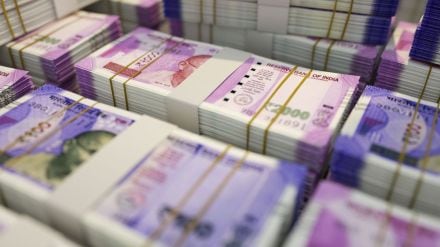With the “floodgates” of the JPMorgan bond index opening on June 28, there is zero doubt that India will be receiving significant inflows into the debt market on an ongoing basis. In addition to the USD 14 billion or so that has come in over the past 12 months, there are estimates of USD 20-30 billion expected over the next one year. Further, with the Bloomberg Emerging Market Local Currency government index opening its gates in January 2025 and the UK FTSE Russell Index reportedly considering inclusion, the flows should continue to grow over time.
The flip side, of course, is that as the market gets thereby more integrated globally, volatility will also increase as professional debt managers simply move money around based on global macro-changes. And while the Reserve Bank of India (RBI) has driven volatility sharply lower over the past year almost as a matter of faith, as the market pressure increases it will doubtless have to revisit the cost/benefit of this policy.
Already, there appear to be some signs of change. Inter-day volatility, while still extraordinarily low (at 1.75%), has risen nearly 16% from its all-time low about a month ago. Perhaps more significantly (and certainly noticeably), intra-day volatility (as measured by the spread between the day’s high and low), while still low on average, is nearly 50% higher than its low at the start of 2024. To be sure, these moves were partly driven by the election results, but there is little doubt that the rampaging debt inflows were also a player.
Given this, and the fact that debt inflows remained net positive even since the election results (while equity flows took two weeks to turn net positive), might it be time for exporters to take some risk off the table?
Already, the par strategy of staying unhedged since premiums are so low has been losing money — if an exporter had simply sold sixth months forward each month since October last year, it would have earned an average of 50 paise more per dollar as compared to staying unhedged. While the numbers are modest (because of the attenuated premiums), INR 50 lakh for each USD 10 million, particularly with risk completely controlled, is hardly something to leave on the table.
While there is, of course, no certainty that rupee volatility will rise and, indeed, even if it does, that this will result in a stronger rupee, I believe that both of these are educated guesses and worth acting upon for at least part of your risk portfolio. Further, a close examination of the RBI’s intervention practices suggests that it has been trying to draw a tighter and tighter line under 83.50.
To be sure, there are — as there always are — global forces that could push the rupee in the opposite direction — for instance, a worsening of the already horrible situation in Palestine or Ukraine — but carrying risk in the expectation that things may fall apart is a sure recipe for failure over any length of time.
Having said that, I wouldn’t hedge heavily too far into the future — certainly not beyond the US elections, in any case. I have just returned from a holiday in the US, and, shocking though it seems to what appear to be sane people anywhere else, Trump — Mr Nobody Knows What He’ll Do Next — is at least a joint favourite to win. The uncertainty that would create, particularly in the US equity market, which is very richly valued given the difficulty the Fed is having bringing inflation down, could lead to a major risk-off crisis globally. What is worse is that if Trump doesn’t win, he will surely burn the bushes hysterically, creating an even greater conflagration.
It is conceivable that this could generate enough terror that even India’s strong positioning and all of the RBI’s horses and all the RBI’s men may not be able to keep the rupee strong at that time.
But, as I said before, market dislocations are never something to bet on. Hence, I would recommend a scaled hedging programme for exporters, using forwards for the next three or four months and structured options beyond that. Importers should stay wary, riding the steady rupee, but look for some structured options for payments due beyond November.
Jamal Mecklai – CEO, Mecklai Financial
Views are personal
